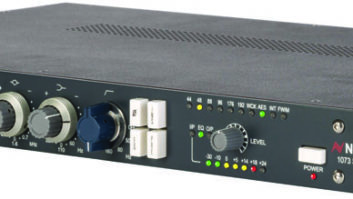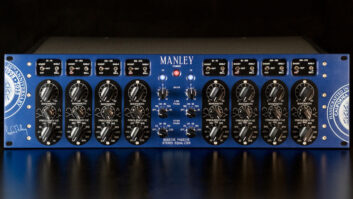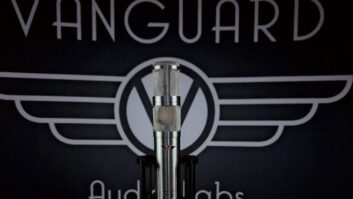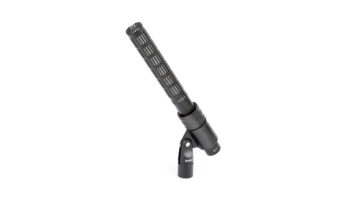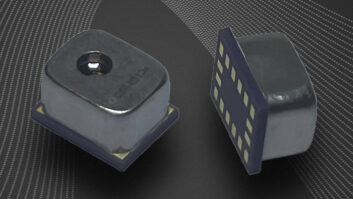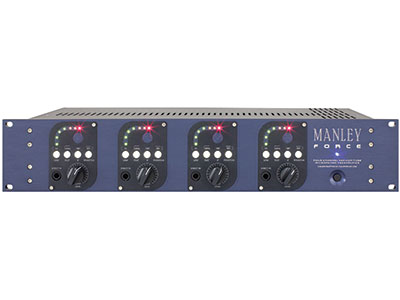
There are quite a few 4-channel microphone preamps on the market, most of which are solid-state. Some of them feature inserts, tone shaping and even A/D conversion, and at least one features blending of solid- state and tube circuit paths. But there aren’t many dedicated to the deceptively simple task of amplifying a microphone using a tube-based signal path. That’s where the Manley Force enters.
The Force is a 4-channel vacuum tube microphone preamp based on the company’s proprietary CORE circuitry, which was designed for high headroom, extended frequency response and low noise. Housed in a two-rackspace chassis, each channel offers a mic input with a hand-wound Manley IRON transformer, plus a front panel DI. Controls per channel include High/Low gain, 120Hz HPF, Polarity, +48VDC phantom, 7-segment LED meter, and a conductive plastic pot for level control. Rear panel XLR audio I/O connectors are gold-plated, as are the ¼-inch DI jacks.
HIGHLIGHT REEL
A few highlights of the Force’s design bear mentioning: The level control is actually an attenuator. Its default position is fully clockwise (40dB gain), so the best S/N performance is achieved by setting the gain switch to Low and running the attenuator as close to clockwise as possible. When set to High, the gain switch adds 10 dB of amplification. An internal jumper can be moved to increase maximum gain to 60 dB, yielding a slight increase in the noise floor (see the “Try This” sidebar).
Four Sovtek 12AX7WAs are used (one per channel) in Class-A operation, and unlike some “toob” preamps, they are run from 300-volt rails for increased headroom—and indeed the Force flexes plenty of headroom. The LED meter indicates output level; when the red LED illuminates at +24 dBu, the preamp still has about 8 dB before clipping.
Audio circuitry for the Force is neatly laid out on a single large circuit board, and the power supply is mounted vertically on the right side panel to separate it from the audio section. As I’ve come to expect from Manley, build quality is high, with 1-percent resistors and WIMA caps in critical positions of the audio path. The front panel (beautifully finished in Manley’s trademark gray/blue) is almost a quarter-inch thick, and will have no problem supporting the weight of the chassis when screwed into a rack.
FIRE IT UP
When engaging the Force’s front panel power switch, the power indicator blinks and the audio outputs are muted for about 30 seconds while the unit warms. When the LED lights steadily, audio is unmuted and the unit is ready for use.
The clean layout of the front panel made it very easy to operate. I allowed the Force to warm up for about 30 minutes before using it for the first time on a session recording drums. The kit was recorded using a Sennheiser e602II on kick, Audix i5 for snare, and a pair of DPA 2011s overhead. All of these mics were run through the Force to a Metric Halo LIO8. Bottom end extension on the kick drum was markedly improved compared to my usual kick preamp and made me go “mmm,” in a good way. Ditto for the snare that now had personality and increased impact, and cymbals, which sounded exceptionally clear.
On another drum session I used a pair of Groove Tubes MD2a tube condenser mics overhead with the same kick and snare mics. It’s been a long time since I’ve used the MD2a mics, and my memory of capturing a beautiful kit sound with them were accurate: the combination of the MD2a and Force was wonderful, providing plenty of low end (no close tom mics required), excellent imaging and detail, and a crisp, solid snare. It was glorious. Listening to only the overheads, you’d swear that the hat and snare were close-miked.
My next session using the Force was a singer/songwriter who played acoustic guitar and sang at the same time. I used a pair of Audio-Technica AT4050 mics, both set to figure-8 and arranged in a sort of Blumlein configuration—not as a means of recording stereo but as a means of taking advantage of the nulls in the figure-8 patterns so that the vocal mic rejected the guitar, and the guitar mic rejected the vocal. It was quite effective. In this context, the combination of the Force and AT4050s produced a very “finished” sounding vocal; it didn’t need EQ, and the vocal sat atop the guitar in the mix quite nicely.
Using the Force with an AKG C12VR on male lead vocal for a pop song produced a crisp, present, full sound. When the singer got loud, there was absolutely no hint of strain on the Force—it just kept getting louder. This preamp has headroom for days. On the opposite end of the spectrum, the Force was dead quiet when used in conjunction with a Neumann TLM103 for a softly picked acoustic guitar.
PLENTY OF CLEAN GAIN
I also used the Force with RCA 44BX and RCA 74B ribbon microphones. The inherently low output of these mics made it difficult to achieve sufficient recording level into my DAW, even with High gain engaged and the attenuator at 0 (max gain). I decided to take advantage of the Force’s internal gain setting, so I popped the hood and moved the jumpers on two channels to “60 dB.” This worked very well, generating a reasonable (though certainly not hot) level into the DAW using the RCA mics while still giving me two channels at the stock gain setting for lower noise when using hotter mics. The background noise level was slightly higher but only noticeable when tracks were soloed. This is a very useful feature. Recording a male vocal using the Force (!) and an RCA 74B preserved all of that mic’s trademark murkiness, providing a timbre that takes you back to the classic days of radio.
Unlike some preamps, the gain switch setting applies to the Force’s front panel DIs. Acoustic guitar via the DI was clean, bright and clear, and made the pickup sound less brittle than other DIs. Synths sounded great through the Force DIs: clean, quiet and dare I say “warm” (sorry). It easily handled hot outputs, so open that attenuator and let it rip. I found that inputs to many interfaces gave up way before the Force. There’s no switch to engage the DI, but when inserting a ¼-inch connector you can hear a relay automatically switch to the DI, so you won’t have any concerns regarding which input (mic or DI) is active.
CLASS ACT
The Force distinguishes itself by being the only 4-channel mic pre smack in the middle of the price range that dedicates its topology to tube amplification, sans tone controls or A/D conversion. Some people might be bothered by the lack of inserts, but if I’m buying a mic pre, I want my money going into the preamp, not features that I’m unlikely to use.
The DIs are more than just an afterthought, and the ability to internally adjust the gain setting comes in handy for use with ribbons or low-output dynamic mics such as the Shure SM7B. Add to that great build quality, stunning looks and ease-of-use, and Manley has another winner.
PRODUCT SUMMARY
COMPANY: Manley Laboratories
PRODUCT: Force Four Channel Microphone Preamplifier
WEBSITE: www.manley.com
PRICE: $2,500 MSRP
PROS: Excellent sound, high-quality audio path; DIs on all channels; easy to use.
CONS: Insufficient gain for some low-output ribbon microphones; no inserts.
TRY THIS
With the unit on a flat surface and the rear panel closest to you, remove the two screws that pass through the top of the rear panel; one screw on either side of the top panel, and three screws that pass through the left side panel. Use your fingernails or a plastic screwdriver to lift off the top panel. There is one gain jumper per channel, located approximately 10 o’clock from each tube. The jumper’s default position is 50 dB. Remove it and relocate it to the 60 dB pins. The channel will now provide a maximum gain of 60 dB. You can change any or all four of the jumpers.
In addition to being the Sound Reinforcement Editor for Mix magazine, Steve La Cerra is the front-of-house engineer and tour manager for Blue Öyster Cult.
